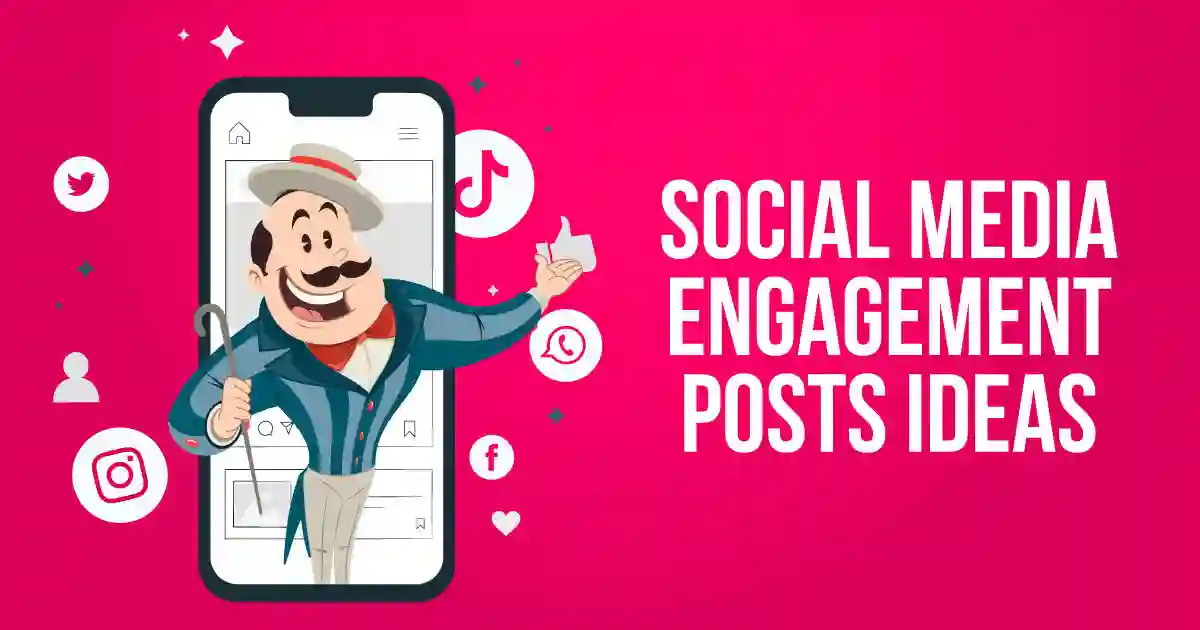Social Media
Call Spectrum: How to Contact Support Fast in 2025

Ugh. Internet dead in the middle of your favorite show? TV acting like it’s possessed? Been there. I swear, the number of times I had to call Spectrum and sit through the eternal hold music… well, enough to learn some tricks.
In 2025, things got a bit better, but calling Spectrum still feels like signing up for a marathon you didn’t train for. Lucky for y’all, I’ve got the lowdown on how to call Spectrum and get help fast, without losing your mind (or your phone battery).
Why Do We Even Need to Call Spectrum?
I mean, tech’s supposed to make life easier, right? But nope. Spectrum’s internet still drops at the worst times.
People call Spectrum for all sorts of reasons:
- Internet slower than a snail on Sunday
- TV channels playing hide and seek
- Billing that looks like a bad math test
- Equipment that’s older than my grandma’s vinyl collection (RIP, old cable box)
- Streaming apps refusing to stream (the irony!)
My first big call Spectrum panic was when I had guests over and the Wi-Fi threw a tantrum. The smell of Walmart’s parking lot rosemary on June 7th, 2019 still haunts me—because I had to wait outside while my router got a reboot.
The Magic Numbers: Where to Call Spectrum (And When)
Alright, let’s get to the nitty-gritty. When you call Spectrum, these are the digits you want:
| Reason for Call | Number to Dial |
| General Help | 1-855-707-7328 |
| Tech Support | 1-833-267-6094 |
| Billing | 1-833-949-0036 |
| New Service | 1-877-906-9121 |
| Spanish Support | 1-844-487-2710 |
Heads up: always have your account number ready. Like, don’t be me once trying to remember it while the automated voice was yelling options faster than a cheetah on Red Bull.
Use the App Before You Call Spectrum — Trust Me on This
Now, before you whip out your phone to call Spectrum, open the My Spectrum App. It’s kind of like that helpful friend who tries to fix your problems before you even call your mom crying.
Here’s what you can do from the app:
- See if there’s an outage in your area (because hey, sometimes it ain’t you)
- Restart your modem remotely (yes, really!)
- Check your bill without hunting for a paper trail that looks like a ransom note
- Chat live with a rep (faster than waiting on the phone)
- Schedule a tech visit (if all else fails)
I learned the hard way to try the app first after my first hold time went for 45 minutes. Forty-five. Minutes. That’s like watching three entire episodes of The Office. RIP my sanity.
When’s the Best Time to Call Spectrum Without Losing Your Mind?
I’m not gonna lie — calling Spectrum during prime hours is a nightmare. The phone lines get busier than a flea market on a Saturday.
From my experience (and a little local gossip), the best times to call Spectrum are:
- Early mornings between 7 and 9 AM — before folks have had their coffee, apparently
- Midweek, like Tuesday or Wednesday (Mondays are hellish, don’t do it)
- Avoid evenings unless you enjoy the sweet sound of hold music
Oh, and when you call Spectrum, always pick the “call-back” option if it shows up. That way, you’re not stuck holding your phone like it owes you money. Trust me, your arms and sanity will thank you.
What To Have Ready When You Call Spectrum (Because They’ll Ask)
It’s no secret — Spectrum reps love to verify you like it’s the FBI hotline.
Here’s your checklist before you dial:
- Account number (from your bill or app)
- The last 4 digits of your SSN (Their/there mix-ups? Guilty as charged.)
- A clear idea of the issue you’re facing
- Equipment model numbers (if it’s a tech problem)
Side note: Once I called Spectrum while holding a cup of coffee. Mid-sentence, it slipped. Coffee everywhere. My notes got smeared, and the rep thought I was code-talking in Morse. Fun times.
Call Spectrum or Chat? Which One’s Faster?
Look, I get it. Sometimes typing feels like too much effort. Other times, talking out loud is just exhausting.
Here’s the deal from my own calls and chats:
| When to Chat | When to Call Spectrum |
| Billing questions or simple fixes | When your internet is DOA |
| If you’re multitasking (at work) | When you need step-by-step help |
| When you want quick answers | When you prefer human voices (no judgment) |
Once, I tried chat for a tech problem. The chatbot acted like it was stuck in 1997. Next day? I had to call Spectrum anyway.
What to Expect When You Call Spectrum in 2025
Fast forward past three failed attempts, and you’ll find that hold times have actually improved a bit.
On average, you’ll wait:
- About 5 to 10 minutes for billing help
- Around 10 to 15 minutes for tech support
- 3 to 5 minutes for new services (apparently, selling is faster than fixing)
Bonus tip: If transferred, politely ask for a “warm transfer.” That means the rep stays on the line to explain your issue to the next person. Saves you from sounding like a broken record.
Outages: Call Spectrum or Wait It Out?
When the whole neighborhood is offline, it’s probably an outage.
Before you call Spectrum, do this:
- Check the My Spectrum App for outage alerts
- Visit the website’s outage checker
- See if neighbors are buzzing about it on Nextdoor or Facebook
My neighbor Tina swears her kale patch cured her Zoom fatigue—and she’s not wrong—but when the internet was out, she still wanted answers. Sometimes you gotta call Spectrum for an ETA.
What to Say When You Call Spectrum (Hint: Be Specific)
Nothing wastes time like vague complaints.
Instead of “My internet sucks,” try:
- “My connection drops every 10 minutes.”
- “My cable box is stuck on the loading screen.”
- “There’s a charge on my bill I don’t recognize.”
When I first started calling Spectrum, I was just angry and vague. Learned the hard way: specifics get faster fixes.
When to Ask for a Supervisor
If you’re stuck in a loop, don’t be shy about escalating.
Say something like:
- “I’ve tried troubleshooting multiple times. Can I speak to a supervisor?”
- “Is there an escalation team for persistent issues?”
I hate confrontation, but being calm and firm is the only way out sometimes. Plus, supervisors tend to have magic powers (or at least better fixes).
Being Nice Pays Off — For Real
Here’s a secret: being polite actually helps. I know, sounds nuts. But Spectrum reps are people too.
Being kind can:
- Get you priority treatment next time
- Sometimes result in waived fees or freebies
- Keep your own blood pressure from hitting the roof
And honestly, who wants to yell at someone whose job you’d probably hate? So when you call Spectrum, smile — even if they can’t see it.
Quirky History: Calling Support Was Way Weirder Back Then
Fun fact: The first “call Spectrum” type support lines started in the 1960s, back when it was Time Warner Cable. Calls went through switchboard operators who sometimes accidentally connected you to the police instead. Wild.
Also, in 2020, average hold times were 23 minutes. Now? Under 12 minutes. Progress, sort of.
When All Else Fails…
If you call Spectrum and still have no luck, try these:
- Ask for a case number so reps don’t repeat troubleshooting
- Try social media support — Spectrum’s Twitter support is surprisingly fast
- File a complaint with your state’s Public Utilities Commission (just the threat sometimes gets action)
Use Your Call Spectrum Moment to Save Money
Looking to drop your bill? I do too. When you call Spectrum, try this:
- Mention you’re considering switching providers
- Ask for any promotions or discounts
- Check if downgrading your plan or equipment could save bucks
The cracked watering can from Pete’s Hardware on 5th Ave survived my overwatering phase—unlike my first bill negotiation, which went much better than expected once I tried this.
Final Prep Before You Call Spectrum
- ✅ Account number
- ✅ Last 4 of your SSN
- ✅ Clear issue description
- ✅ Check for outages first
- ✅ Open the app
- ✅ Block 30 minutes for the call
If you’ve got all that, you’re ready to call Spectrum without losing your cool.
Anyway, Here’s the Kicker
Next time your internet craps out or the TV’s being funky, you won’t just call Spectrum blindly and pray. You’ll be armed with insider hacks, the right mindset, and maybe a fresh cup of coffee (or something stronger).
May your Wi-Fi stay strong, your hold times short, and your tech troubles few. And if not? Well, you know who to call Spectrum for.
Social Media
Beyond the Clock: Factors Influencing Facebook Posting Success

When it comes to Facebook marketing, timing your posts is undeniably important, but there’s more to achieving success than simply posting at the right hour. To unlock the full potential of your Facebook strategy, it’s essential to consider a range of factors that influence posting success beyond the clock. In this article, we’ll explore these often-overlooked factors and provide insights into crafting a well-rounded approach to maximize your Facebook posting impact.
1. Content Relevance and Quality
While timing matters, the quality and relevance of your content play an equally crucial role in determining your Facebook posting success. Your posts should resonate with your audience’s interests, needs, and aspirations. High-quality content that educates, entertains, or adds value is more likely to engage your audience and prompt them to take action.
To ensure content relevance and quality:
- Know Your Audience: Understand your target audience’s preferences, pain points, and interests. Tailor your content to address their specific needs.
- Create Compelling Visuals: Incorporate eye-catching visuals, such as images, videos, and infographics, to enhance the appeal of your posts.
- Use Captivating Headlines: Craft attention-grabbing headlines that entice users to click and learn more about your content.
- Provide Value: Offer valuable insights, tips, or solutions that solve your audience’s problems or answer their questions.
2. Consistency in Posting
Consistency is a key factor in maintaining engagement and building a dedicated following on Facebook. Posting sporadically can result in your audience losing interest or forgetting about your brand. A consistent posting schedule helps establish expectations, ensuring that your audience knows when to anticipate your content.
To maintain consistency in posting:
- Create a Content Calendar: Plan and schedule your posts in advance to ensure a steady stream of content.
- Stick to a Posting Schedule: Determine the frequency and timing of your posts and adhere to your schedule.
- Automate When Necessary: Utilize scheduling tools or social media management platforms to automate your posting while maintaining consistency.
3. Engagement and Community Building
Engagement goes beyond the number of likes and shares your posts receive. It’s about fostering a sense of community and meaningful interaction with your audience. Responding to comments, addressing questions, and actively participating in discussions can strengthen your brand’s presence on Facebook.
To enhance engagement and community building:
- Respond Promptly: Monitor your posts for comments and messages and respond in a timely and personalized manner.
- Encourage User-Generated Content: Encourage your audience to share their experiences or creations related to your brand, creating a sense of belonging.
- Participate in Conversations: Join relevant discussions, groups, and forums to establish your brand as an authority in your industry.
4. Analytics and Data Analysis
Measuring the performance of your Facebook posts is essential for refining your strategy over time. Analytics tools like Facebook Insights provide valuable data on post reach, engagement, and conversion rates. Regularly analyzing these metrics allows you to identify what’s working and what needs improvement.
To make data-driven decisions:
- Set Clear Goals: Define specific goals for your Facebook strategy, whether it’s increasing website traffic, growing your email list, or boosting sales.
- Track Key Metrics: Monitor metrics such as reach, engagement, click-through rates, and conversion rates to assess the effectiveness of your posts.
- Experiment and Adjust: Use the insights gained from data analysis to experiment with different post types, content formats, and posting times. Adjust your strategy based on what yields the best results.
5. Audience Segmentation
Not all members of your Facebook audience are the same. They may have different preferences, interests, and needs. Segmenting your audience allows you to tailor your posts to specific groups, delivering more personalized and relevant content.
To effectively segment your audience:
- Use Facebook’s Targeting Options: Utilize Facebook’s audience targeting options to reach specific demographics, interests, and behaviors.
- Create Custom Audiences: Build custom audiences based on factors like website visits, email list subscribers, or previous interactions with your brand.
- Craft Tailored Content: Develop content that speaks directly to the needs and interests of each segmented audience, increasing the likelihood of engagement.
Conclusion
While timing remains a critical aspect of Facebook posting success, it’s essential to recognize that other factors also significantly influence your results. By focusing on content quality and relevance, maintaining consistency in posting, fostering engagement and community building, analyzing data, and effectively segmenting your audience, you can create a well-rounded approach to maximize your impact on Facebook.
Ultimately, success on Facebook is about building meaningful connections with your audience, providing value, and continuously refining your strategy based on data and audience feedback. By considering these factors beyond the clock, you can unlock the full potential of your Facebook marketing efforts and achieve long-term success on the platform.
Social Media
The Mobile Era: Navigating Social Media Engagement on Smartphones

In the digital age, smartphones have revolutionized the way we interact with social media. With over 3.8 billion smartphone users globally, the mobile era has reshaped social media engagement, making it more dynamic, accessible, and personal. This article explores the intricacies of navigating social media engagement in the mobile era, offering insights and strategies for individuals and businesses alike.
The Rise of Mobile Social Media
Ubiquity of Smartphones
Smartphones have become ubiquitous, offering users constant connectivity. This has led to an increase in the average time spent on social media, with a significant portion of this activity happening on mobile devices.
Shift in User Behavior
The mobile era has brought a shift in user behavior. People now expect real-time updates and instant access to information. Social media platforms have adapted by optimizing their mobile apps to enhance user experience and engagement.
Optimizing Content for Mobile Users
Mobile-First Design
Content creators and marketers must adopt a mobile-first approach. This means designing content that is easily consumable on small screens, with clear visuals and concise text.
Emphasizing Visual Content
Visual content like images, short videos, and infographics are more engaging on mobile devices. Platforms like Instagram and TikTok, which focus on visuals, have seen tremendous growth due to their mobile-centric design.
Leveraging Mobile-Specific Features
Utilizing Mobile App Features
Social media platforms offer unique features on their mobile apps, such as Instagram Stories or Twitter Fleets. Utilizing these features can enhance engagement, as they are designed specifically for mobile users.
Location-Based Services
Services like geotagging and local search features enable businesses to target audiences based on their location, offering a more personalized and relevant experience to mobile users.
Engaging with Mobile Audiences
Instant Communication
Mobile social media allows for instant communication. Brands can interact with their audience in real-time, providing quick responses and fostering a more personal connection.
Mobile Notifications
Push notifications are a powerful tool for keeping users engaged. They can be used to alert followers about new content, live streams, or important updates, increasing the likelihood of immediate engagement.
Analyzing Mobile User Data
Understanding Mobile Analytics
Mobile user data provides valuable insights into user behavior, preferences, and engagement patterns. Analyzing this data helps in refining content strategy to better suit mobile audiences.
Tailoring Content Strategy
Based on analytics, content can be tailored to the times when mobile users are most active, the type of content they prefer, and how they interact with different formats.
Challenges and Solutions
Screen Size Limitations
The smaller screen size of smartphones can limit the type of content that can be effectively delivered. The solution lies in creating bite-sized, easily digestible content that captures the user’s attention quickly.
Data Privacy Concerns
With increased use of mobile devices, data privacy and security have become significant concerns. Businesses must ensure they adhere to data protection regulations and maintain user trust.
The Future of Mobile Social Media
Continuous Innovation
The future of mobile social media lies in continuous innovation. Augmented reality (AR), virtual reality (VR), and AI-driven personalization are set to further revolutionize the mobile social media experience.
Integration with Other Technologies
Integration with other technologies like wearables and smart home devices will make social media engagement even more seamless and integrated into daily life.
Conclusion
The mobile era has fundamentally changed the landscape of social media engagement. By understanding and adapting to these changes, individuals and businesses can effectively navigate this new era. Success in mobile social media engagement relies on creating content that is tailored for mobile consumption, leveraging mobile-specific features, engaging with audiences in real-time, and using mobile analytics to refine strategies. As technology continues to evolve, staying ahead of trends and being adaptable will be key to thriving in the mobile-dominated world of social media.
Social Media
The TikTok Clock: Time Matters – Boosting Visibility with Strategic TikTok Posting

In the dynamic realm of TikTok, understanding and mastering the art of timing is as crucial as the content itself. With millions of active users and an ocean of content, standing out on TikTok isn’t just about creativity and trends; it’s also about timing your posts for maximum impact. This article delves into the strategies for enhancing visibility on TikTok by aligning your posts with the rhythms of the TikTok clock.
Understanding the TikTok Algorithm
The TikTok algorithm is a complex system that dictates which content gets seen and when. It’s influenced by user interactions, video information, and device settings. However, one of the less discussed but equally vital aspects is timing. The algorithm tends to favor videos that gain quick traction, and posting at the right time can be your ticket to achieving this.
1. Knowing Your Audience
Understanding when your audience is most active is key. If your target demographic is young professionals, they might be more active in the evenings or during lunch breaks. In contrast, a teenage audience might be more active after school hours.
2. Global vs. Local Audience
Your posting time should also consider the geographical location of your target audience. If you’re catering to a global audience, you may need to experiment with posting at different times to accommodate various time zones.
3. The Power of Mornings
Posting in the morning can work to your advantage. As people start their day, they often scroll through social media. A morning post can be the fresh content they engage with, boosting its visibility throughout the day.
4. Capitalizing on Lunch Breaks
Lunch hours are peak times on TikTok, as users take a break to eat and scroll. Posting during this window can significantly increase your chances of getting more views and engagement.
5. Evening Engagement
Evenings are prime time on TikTok. Users are more relaxed and have more free time to engage with content. Posting in the evening can ensure your content reaches a larger, more engaged audience.
6. The Weekend Wave
Weekends usually see a surge in TikTok activity. Users have more free time and are more likely to spend longer periods on the app, giving your content a better chance to be seen.
Strategies for Strategic Posting
Once you understand the best times to post, the next step is crafting a strategic approach to maximize your visibility.
7. Consistency is Key
Consistency in posting not only helps in building a loyal audience but also signals to the TikTok algorithm that your channel is active and engaging. This doesn’t mean posting numerous times a day, but rather sticking to a predictable posting schedule.
8. Leverage TikTok Analytics
TikTok provides analytics to creators, which can be a goldmine for understanding when your audience is most active. Use this data to refine your posting schedule for better engagement.
9. Experiment and Adapt
The TikTok landscape is always changing. What works today might not work tomorrow. Regularly experiment with your posting times and track the performance to see what yields the best results.
10. Quality Over Quantity
While timing is essential, it should not compromise the quality of your content. High-quality, engaging content will always perform better, regardless of the posting time.
11. Engage Immediately After Posting
Engaging with your audience soon after posting can boost the video’s visibility. Respond to comments and interact with your followers to keep the engagement high.
- Follow the Trends
TikTok is driven by trends. Posting content that aligns with current trends, especially at peak times, can give you a significant visibility boost.
13. Use Hashtags Wisely
Hashtags can increase the discoverability of your content. Use relevant and trending hashtags to make your posts more accessible to a broader audience.
Conclusion:
In the fast-paced world of TikTok, timing is a strategic tool that can significantly enhance your visibility. By understanding your audience, leveraging analytics, maintaining consistency, and aligning your posts with the platform’s busiest hours, you can increase your chances of success. Remember, on TikTok, time matters as much as the content itself. Mastering the art of strategic posting can transform your TikTok journey, taking your content from unseen to viral.
-

 Business2 years ago
Business2 years agoWhat Can a Loan Calculator Do For You?
-

 General2 years ago
General2 years agoSafe Play The Impact of Secure Playgrounds
-

 Games2 years ago
Games2 years agoStep-by-Step Guide: How to Register on Armadatoto
-

 Business6 months ago
Business6 months agoBeyond the Boardroom: Business Consulting in Diverse Industries
-

 Sports3 years ago
Sports3 years agoBest Slot Machines in World and Where to Play Them
-

 Games2 years ago
Games2 years agoSecuring the Bet: The Essential Role of Muktu Polis in Online Betting Safety
-

 Sports2 years ago
Sports2 years agoExploring the World of Online Gaming: A Comprehensive Review of TMTPLAY Casino Philippines
-

 Automotive3 years ago
Automotive3 years agoAfter a Bike Accident, What Are Your Legal Options?






